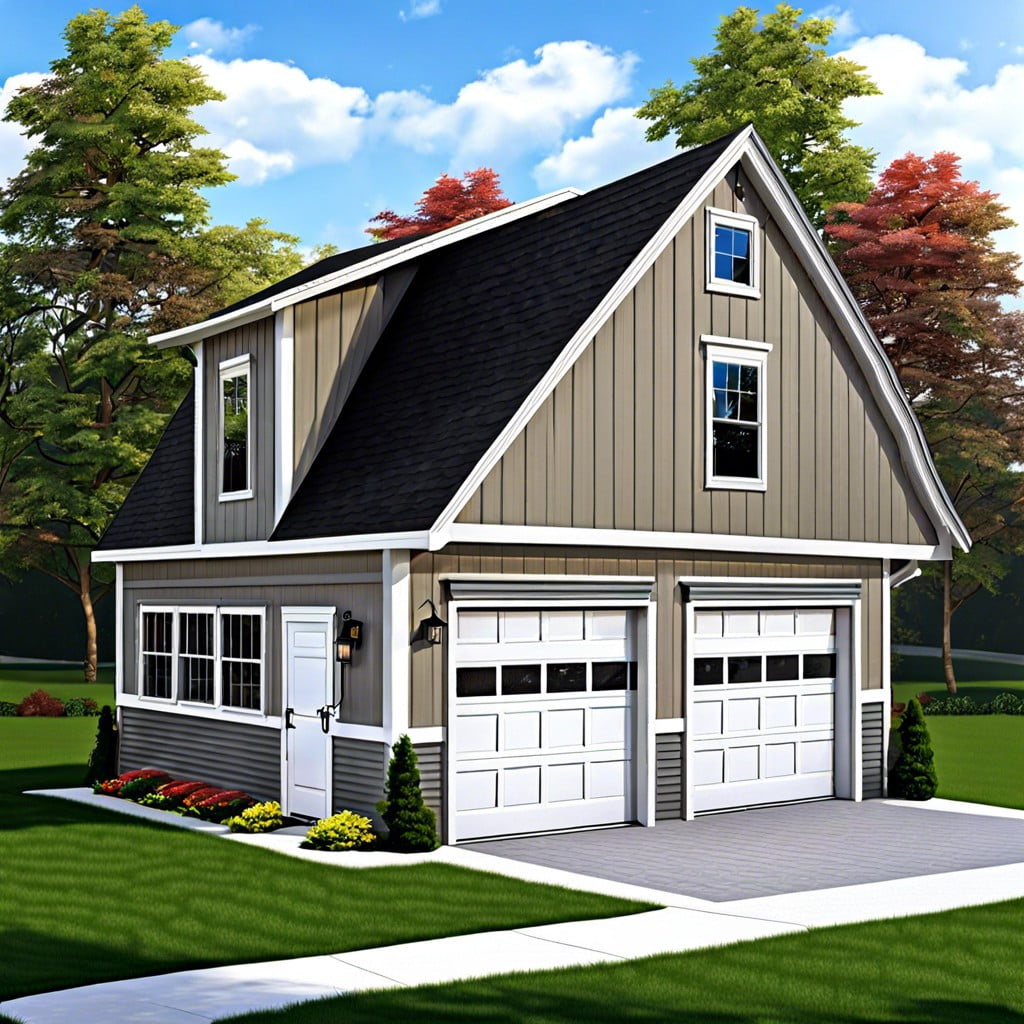This article provides a detailed breakdown of the costs involved in building a 30×30 garage with an apartment, covering everything from materials to labor expenses.
Key takeaways:
- Construction materials, interior, and exterior costs contribute to the budget.
- Labor costs vary based on complexity, regional rates, and crew efficiency.
- HVAC, electrical, and plumbing installations require professional handling.
- Permits and legal fees can affect the budget and timeline.
- Material choice, geographical location, design complexity, and changes mid-project influence overall costs.
Cost Breakdown of a 30×30 Garage With Apartment

When calculating the expense of building a 30×30 garage with an apartment, consider several cost components. Firstly, construction materials play a significant role. You’ll need to budget for concrete for the foundation, framing materials, roofing, insulation, drywall, and finishing elements like paint and trims.
Secondly, think about interior costs. Flooring, cabinets, and appliances for the apartment can vary widely in price depending on the quality and style chosen. Opting for high-end finishes can significantly increase your budget.
Thirdly, exterior costs shouldn’t be overlooked. Siding materials, windows, and doors not only impact the look of your new garage with an apartment but also contribute to its energy efficiency and durability.
By understanding these cost factors, you gain better control over your project’s budget, allowing for adjustments where necessary to stay on target.
Labor Costs for Construction
Building a garage with an apartment is quite an endeavor, and labor costs can be a significant part of your budget. Typically, these expenses cover the work of skilled tradespeople including carpenters, electricians, and plumbers. The complexity of the project, like adding a second story for the apartment, generally means more hours of labor.
Labor charges are influenced by regional wage rates. In areas with higher living costs, expect to pay more for labor. Additionally, the current demand for contractors can also affect costs; during busy periods, rates may increase.
Another aspect to consider is the efficiency of the crew. Experienced contractors who have built garages with apartments before may work faster, potentially saving on total labor costs despite possibly higher hourly rates.
Finally, unexpected issues such as weather delays or material shortages can extend the construction timeline, impacting labor costs. Always factor in a contingency budget to cover these unforeseen expenses.
Cost of Utilities and Installations (HVAC, Electrical, Plumbing)
Installing utilities is a pivotal part of adding an apartment to your garage, as it makes the space livable and functional. Here’s a quick guide to understanding these costs:
HVAC systems, crucial for heating and cooling, vary widely in price depending on the type and size of the unit. For a modest apartment, expect to pay between $3,000 and $8,000.
Electrical work involves wiring the entire space for lighting, appliances, and outlets. This cost can also be influenced by the local rates of electricians. On average, wiring a garage apartment could cost around $1,500 to $5,000.
Plumbing is essential if you’re adding a bathroom and kitchen. This includes installing pipes, sinks, showers, and possibly a water heater. Plumbing installations typically range from $1,000 to $6,000, influenced by the complexity of the job and the cost of the fixtures you choose.
Remember, these installations require professional handling to comply with building codes and safety standards. Hiring experienced contractors not only ensures quality but also helps prevent costly mistakes and future problems.
Permitting and Legal Fees
Navigating permits can vary significantly by location, affecting your budget and timeline. Local building regulations often require detailed plans and safety inspections to ensure the structure complies with regional codes. These permits might cost anywhere from a couple hundred to several thousand dollars, depending on your area’s complexity and building codes.
Legal fees could also come into play, especially if you need to consult with a lawyer over zoning laws or property line disputes. These consultations might add an unforeseen expense but are crucial in avoiding costly violations and potential tearing down of non-compliant structures.
Before starting your project, visit your local building authority or their website. Gather all necessary information on the required permits and potentially applicable legal constraints to avoid any surprises during the building process. Doing this groundwork preemptively helps in maintaining budget control and steering clear of legal hiccups during construction.
Factors Affecting Overall Costs
Various elements can influence the total expense of building a garage with an apartment. The choice of materials ranks high among these factors. Opting for high-end finishes or specialized materials can significantly bump up costs compared to more standard options.
Geographical location also plays a crucial role. Construction costs can vary wildly depending on where you build. Urban areas tend to be more expensive due to higher labor rates and material costs than rural settings.
Additionally, the complexity of the design impacts the final bill. A straightforward, rectangular structure will generally be less costly than one with multiple stories, custom architectural features, or intricate layouts.
Lastly, changes mid-project can inflate costs unexpectedly. Adapting plans once construction has begun usually leads to increased labor and materials expenditures.